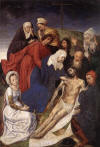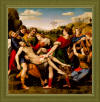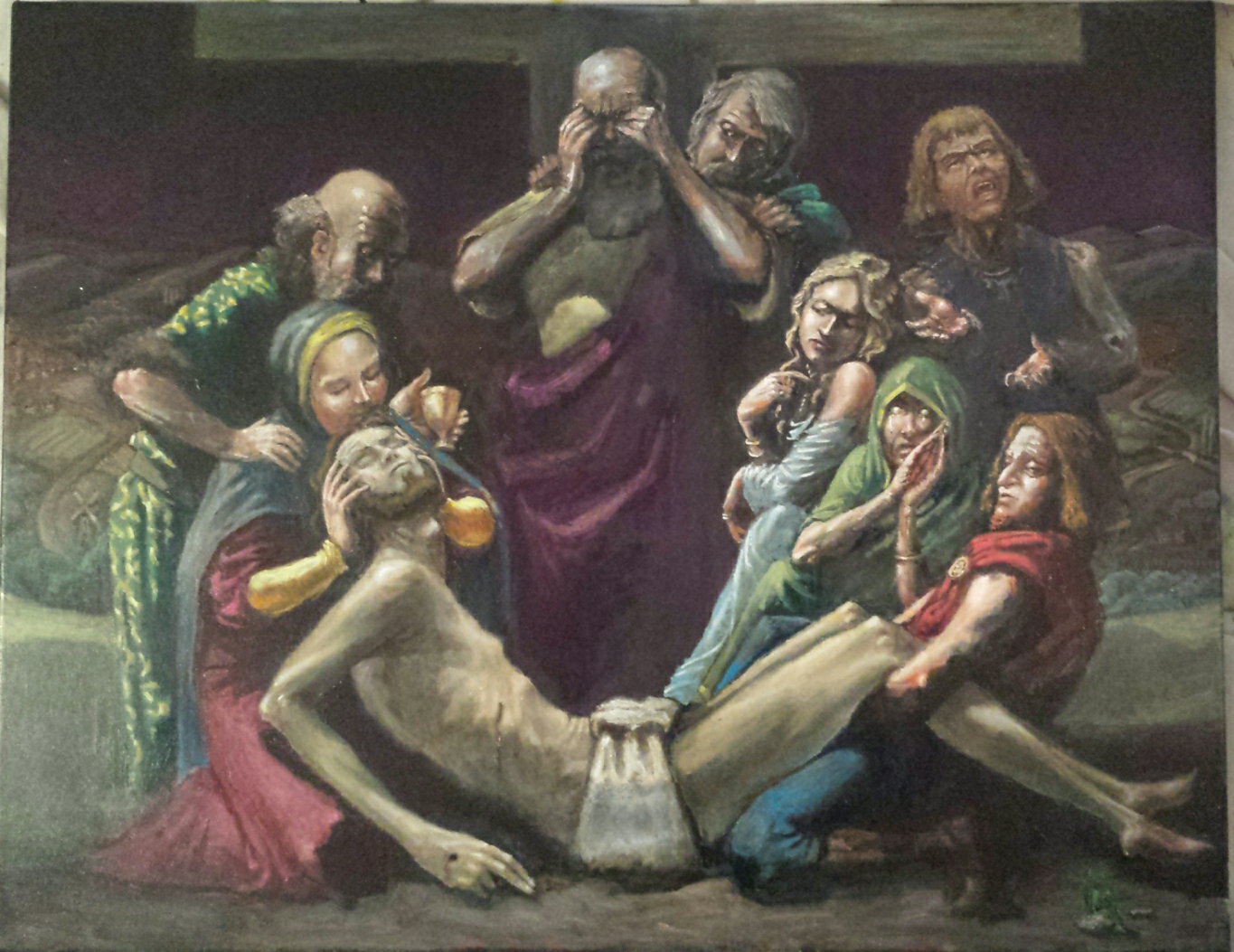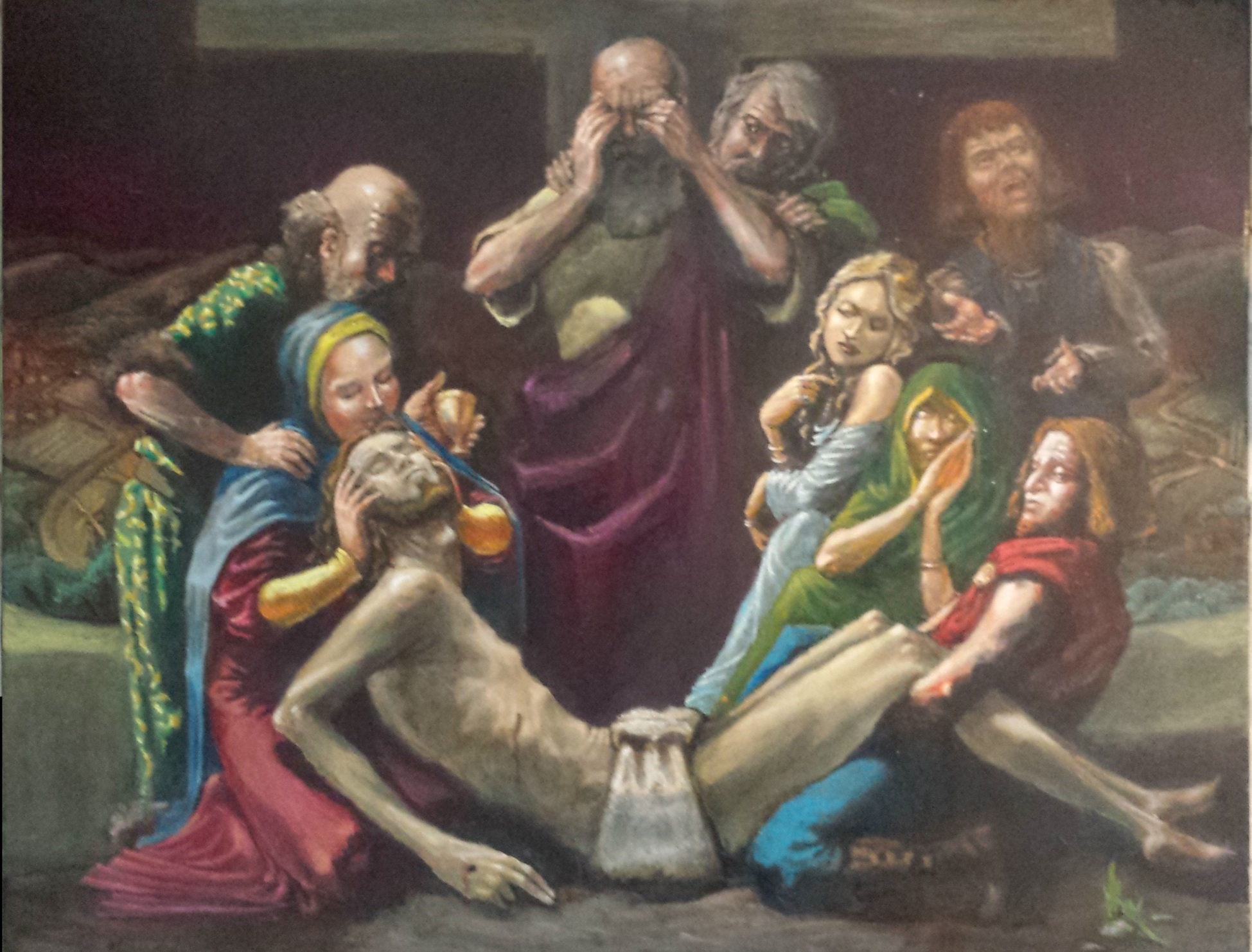






LAMENTATION OF CHRIST
The Lamentation is a traditional subject for painters that is about surrounding a passive nude corpse with animated clothed figures in an expressive narrative. Setting aside spirituality, it represents a compositional challenge. Something to cut one's teeth on. I am not religious but am informed, through art and literature and study, and, I hope, respectful enough. That said, one intentional reading of the narrative in my piece is anti-religious, in that none of the figures are mourning 'properly'.
The cast of characters to be included in a traditional lamentation are Christ, Mary of Bethlehem, Mary Magdelene, Mary of Bethany (sister of Lazerus), Nicodemus, and Joseph of Aramathea. Joseph is not the father of Christ, but is a rich man who pays off the Romans to let him bury the body in his tomb and also fills the cup used in the last supper with the blood of Christ. I am adding Peter and two unclear male followers.
Some Lamentations from Art History:
 |
 |
 |
 |
 |
 |
 |
| Caracci | Cleve | Giotto | Goes Wenen Recht | Tintoretto | Raphael | Solario |
I first took a stab at this composition around 1990 in a fairly small piece.
This may be one way to represent the composition
While simultaneously reading Eco's Name of the Rose and Alberti's On Painting
in the summer of 2015, I undertook to tackle it again. It is oil on canvas 22" x
28".

Firstly, I wanted to solve the problem of dead space over the Virgin's head and create more of a circular motion so I added a Joseph. Naively, this at first was a Joseph of Bethlehem in my mind, but I got it sorted fairly quickly. I did like the hands covering the face of Peter in the first, but thought that I could put more pain in the expression by having him press into his eyes, but I am already thinking that he is lying and it trying to feign tears. The figure behind him might be suspecting him of deceit.
The hat on Nicodemus was, I thought, to give drama to the lines and to arrest the movement created when the eye jumps off the knees of Christ like a ski jumper.
Continuing to work out the tonal layer. Joseph goes from rags to riches. The questioning figure appears behind on the right and then I start to immediately push him further and further back. He should parallel Joseph without taking the lesser Marys out of the main group.
The first layers of colours are big and bright and there is no idea yet that there should be any sort of background.
The background was a relief. It had become too bottom foreground heavy and there was no place to breath. The crucifix also comes forward.
The only major additions at this point was work on the background figure and the naked body of Christ.
Wishing to put some atmosphere in the background, it became purple, mirroring the Peter's robe and making a second T bar to echo the lower portion of the crucifix that we see. Joseph now has his goblet. He has, in my mind, gone from encouraging Mary to hurry up and get moving to telling her that he needs to get some blood.

At this point I determine that many/most of my flesh tones are too cool, as is the green robe of Mary of Bethany. So the next stage is about warming those things up and trying to give the whole more unity.
